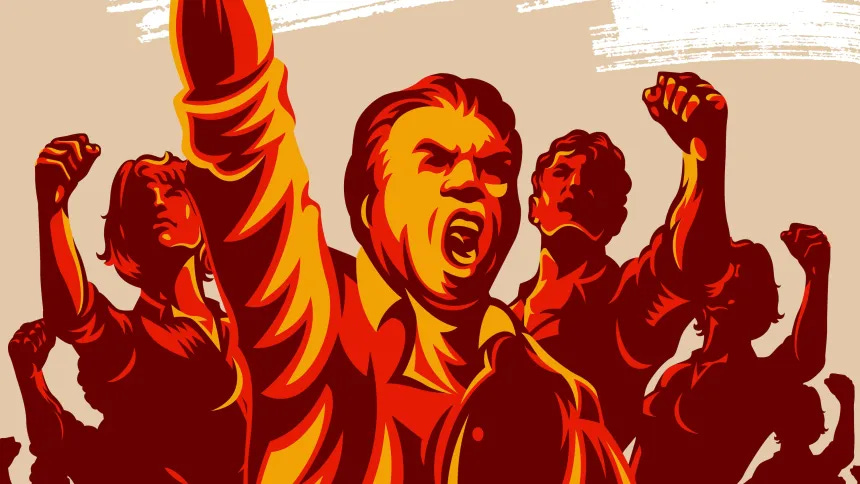In defense of fiery words
What 'incitement' really means and why it matters
Consensus is growing around the idea that words beget violence. Consider some of the things America’s political leaders have said in the wake of Charlie Kirk’s assassination last week at Utah Valley University:
“This kind of rhetoric is directly responsible for the terrorism we’re seeing in our country today.”
“He actively fans the flames of division . . . regularly advocates violence for political retribution, and in more than one case, declares we are at war, not with a foreign adversary, but with each other.”
“There are some deranged people in society, and when they see leaders using that kind of language so often now increasingly, it spurs them on to action.”
“They need to turn down the rhetoric.”
That is, in order, President Donald Trump, Democratic Illinois Gov. JB Pritzker on Trump’s response to political violence, Republican Speaker of the House Mike Johnson, and Democratic Massachusetts Rep. Seth Moulton on Republican leaders.
Throughout American history, especially during times of civil unrest, the government used the power of the state to criminalize what it perceived as advocacy of violence. For example, in 1927, the Supreme Court upheld Charlotte Whitney’s conviction for joining a socialist convention that advocated the overthrow of the government (Whitney v. California).
The Court reasoned that advocating violence could present “danger to the public peace and security,” and that the exercise of the state’s police powers therefore carries “great weight” in such instances. Similarly, Attorney General Pam Bondi recently suggested the federal government might bring “incitement” prosecutions of people who celebrate Charlie Kirk’s assassination.
As the potential for political violence increases, what prevents the government from taking us back to 1927? What prevents the authorities from taking advantage of our fears and criminalizing advocacy of violence or even fiery rhetoric?
Enter Brandenburg v. Ohio (1969), the landmark Supreme Court ruling on incitement. The state convicted a Ku Klux Klan leader for a speech saying, “it’s possible that there might have to be some revengeance taken” against the government if it continued to “suppress the white, Caucasian race.” The Supreme Court reversed the conviction, holding the First Amendment protects advocacy of violence unless it is “directed to inciting or producing imminent lawless action and is likely to incite or produce such action.”
Even if one assumes Brandenburg’s words called for violence, for the Supreme Court, his advocacy was too amorphous and the possibility of violence too remote for his prosecution to stay within constitutional bounds.
Similarly, in Hess v. Indiana (1973), the Court reversed an anti-Vietnam War demonstrator’s conviction stemming from his promise to “take the fucking street later” in connection with his arrest at a protest. The Court held these words fell well below the high Brandenburg standard. Hess did not direct his words toward anyone in particular, nor did they suggest a threat of immediate violence. In establishing this high bar, the Court rejected Whitney’s formulation that advocacy of violence “at some indefinite future time” is punishable on grounds it might ultimately lead to violence.
The Court instead highlighted the difference between “mere abstract teaching of the moral propriety or even moral necessity for a resort to force” and actual preparation for violent action. Thomas Jefferson once said that “a little rebellion now and then is a good thing, and as necessary in the political world as storms in the physical.” Without the Brandenburg distinction, a speaker emulating Jefferson could face jail for recognizing a moral necessity for the resort to force.
Brandenburg’s brilliance is its recognition that political discourse is messy.
Without this distinction, Democratic states could criminalize calling pro-abortion politicians “murderers” on grounds such speech incites violence against those politicians. Republican states could criminalize calling President Trump a “Nazi” on the same grounds. Giving the government the power to lump such heated rhetoric together with speech advocating immediate lawlessness would grant it a cudgel against any speech it saw as threatening its own power — with free and passionate discourse becoming the ultimate victim. Brandenburg therefore allows breathing room necessary for robust public debate.
The Supreme Court made clear in NAACP v. Claiborne Hardware (1982) that “strong and effective rhetoric cannot be nicely channeled in purely dulcet phrases. An advocate must be free to stimulate his audience with spontaneous and emotional appeals for unity and action in a common cause.” In other words, it should not be up to the government to decide when rhetoric has gone too far. Brandenburg’s brilliance is its recognition that political discourse is messy: tone and language are deliberate choices integral to a speaker’s message.
Political leaders and citizens have every right to call out rhetoric that they believe is damaging to our public discourse. Brandenburg — and countless other First Amendment precedents — recognize that these calls, rather than the power of the state, are the most effective antidote to speech we find dangerous or offensive.





Hi Jacob. Anyone in your org covering California Bill S.B. 771? Just read the entire text. Looks viciously anti Free Speech.